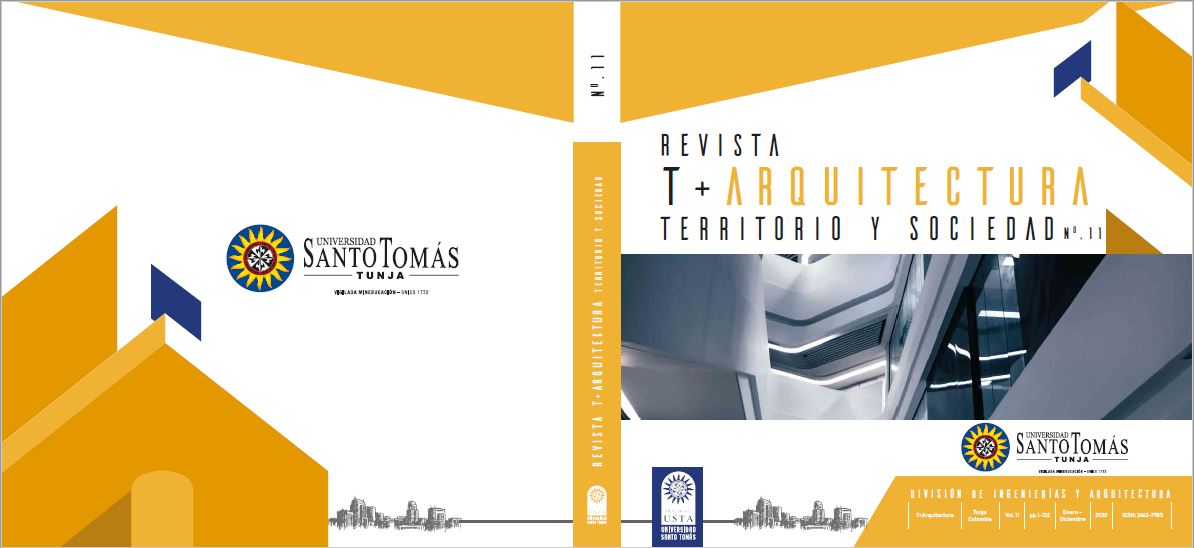ARQUITECTURA DIGITAL EN EL AULA
Contenido principal del artículo
Resumen
El presente artículo tiene como objetivo evidenciar la exploración de herramientas digitales aplicadas a la cotidianidad de la arquitectura, puede brindar a los lectores unas alternativas contemporáneas para hacer arquitectura de forma digital. Por otro lado, el escrito pretende relatar el proceso del semillero Arquitectura Digital y su compromiso con las actividades sustantivas de la universidad Santo Tomas seccional Tunja, la docencia, la responsabilidad social y la investigación. Las posibilidades que aquí se presentan en cuanto a software se realizaron con versiones de prueba de algunos programas de arquitectura que según encuesta realizada y fuentes consultadas se posicionan como herramientas TIC indispensables en la cotidianidad del arquitecto del siglo XXI, más específicamente de aquellos recién graduados que compiten laboralmente por obtener un trabajo en una constructora, estudio de diseño, emprendimiento personal o participación en empresa dedicada a la arquitectura y sus profesiones auxiliares. El proceso que orientó al semillero Arquitectura Digital se fundamenta en tres etapas de trabajo; diagnóstico, práctica y resultados. En el proceso se intenta resolver un problema de caso: la carencia espacial de un lugar donde los estudiantes ydocentes de la facultad de arquitectura puedan ejercer las actividades sustantivas mencionadas. Inicialmente se realiza un diagnóstico de fuentes bibliográficas que se registra en la discusión del presente escrito, luego unas encuestas a estudiantes, docentes y egresados de la facultad, después se realizan muestras en sitio donde se estudian temas de confort humano, luego una experimentación con las herramientas digitales que arroja la tabulación de las encuestas y finalmente en los resultados se registran los diseños y detalles constructivos que responden a la solución del problema estudiado.
Detalles del artículo
Sección
Artículos
Citas
BEGOÑA FUENTES GINER [Departamento de Construcciones Arquitectónicas]. (2015). BIM A PEQUEÑA ESCALA. Valencia: ETS d’Enginyeria d’Edificació Universitat Politècnica de València.
FLIR. (1 de Diciembre de 2011). Guía de termografía para mantenimiento predictivo. Obtenido de https://www.flirmedia.com/:https://www.flirmedia.com/MMC/THG/Brochures/T820264/T820264_ES.pdf
Jiménez, Y. R., Sarmiento, J. S., Gómez, C. A., & Leal-del, C. G. (2017). Analysis of the environmental
sustainability of buildings using. Ingeniería Y Competitividad, Volumen 19, No.1,, 230 - 240.
Madrigal, J. A., Cabello, J. J., Sagastume, A., & Balbis, M. (2018). Evaluación de la Climatización en Locales Comerciales, Integrando Técnicas de Termografía, Simulación y Modelado por Elementos Finitos . Revista información tecnológica Vol 29, 179-188.
Molina, S. M. (2018). Adopción de la metodología BIM en las escuelas de arquitectura en Quito. Revista de la Universidad Internacional SEK, Quito - Ecuador,, 1 - 13.
Universidad de Chile Facultad de Arquitectura y urbanismo . (2019). Encuesta Nacional BIM 2019 Informe de resultados https://bim.uchilefau.cl/. Santiago de Chile: Universidad de Chile Facultad de Arquitectura y urbanismo.
FLIR. (1 de Diciembre de 2011). Guía de termografía para mantenimiento predictivo. Obtenido de https://www.flirmedia.com/:https://www.flirmedia.com/MMC/THG/Brochures/T820264/T820264_ES.pdf
Jiménez, Y. R., Sarmiento, J. S., Gómez, C. A., & Leal-del, C. G. (2017). Analysis of the environmental
sustainability of buildings using. Ingeniería Y Competitividad, Volumen 19, No.1,, 230 - 240.
Madrigal, J. A., Cabello, J. J., Sagastume, A., & Balbis, M. (2018). Evaluación de la Climatización en Locales Comerciales, Integrando Técnicas de Termografía, Simulación y Modelado por Elementos Finitos . Revista información tecnológica Vol 29, 179-188.
Molina, S. M. (2018). Adopción de la metodología BIM en las escuelas de arquitectura en Quito. Revista de la Universidad Internacional SEK, Quito - Ecuador,, 1 - 13.
Universidad de Chile Facultad de Arquitectura y urbanismo . (2019). Encuesta Nacional BIM 2019 Informe de resultados https://bim.uchilefau.cl/. Santiago de Chile: Universidad de Chile Facultad de Arquitectura y urbanismo.

